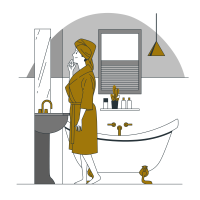The Colosseum Museum

The creation of the Museum of the Colosseum on the second level of the amphitheatre is an anticipatory act for a wider reinterpretation of guided tours of the monument as thematic paths in all the areas of the monument open to the public. The installation starts from several highly symbolic points, which will be defined by well-designed and effective signage that will lead to the valorisation of specific routes. Recent excavations, studies and research have greatly increased our knowledge of the long history of life in the amphitheatre.
These findings have resulted in exhibitions and a wealth of detailed printed material, which have made it possible to rediscover the many ways in which this building has been used and the ideological interpretations that have been applied to it. The museum's exhibition plan places the most important artefacts, both from the architecture and the excavated interiors, in such a way as to highlight the monument's outstanding features. This is done through hypertextual and hypermedia forms, which also explain the cultural reception of the Colosseum throughout history.

It begins with the architectural section, where elements represent the whole, with capitals and remains of transennae (barriers) accompanying large reconstructions of vomitoria (passages). At the same time, the exhibition recalls the significance of the monument as a symbol of architectural mastery for all times. The signature of Hubert Robert, inscribed on a pillar, indicates the French artist's existential relationship with the "living body" of the Colosseum. In the illustrations it provides, there is an accurate representation of the various uses of this ground floor, functions that were already well established in the late Middle Ages.
A later section will show how the amphitheatre worked. Details of daily life in the interior are presented through models and artefacts displayed in showcases. The exhibition tells of the role of the gladiators and the venationes through graffiti, mosaics and reliefs, brought to life with powerful images by artists such as Gérôme and Scott. On the other hand, another section is dedicated to the audience, where the loca (seats) intended for the senators can be found. The presentation explains why these inscriptions are important, accompanied by a diagram showing how the tiered seating was organised. The monument boasts a magnificent array of marbles that show off its rich sculptural ornamentation. Whenever possible, images are used to show the original locations of the decorations.
Then, in discussing the life of the Colosseum in the Middle Ages, it describes its transformation by Christianisation, but compares this with the image of a magical and demonic Colosseum. What Lucangeli's model presents is the scholastic restructuring that corresponds to the “foggy eyebrows” typical of Romantic views and Grand Tourist narratives. The journey ends with a section on the period of the Fascist regime, when there was an ideological reappropriation of the monument as a symbol of the emerging Empire.
Services and Accessibility

Wheelchair accessible

Toilets

Bookshop

Refreshment point

Baby Pit Stop

